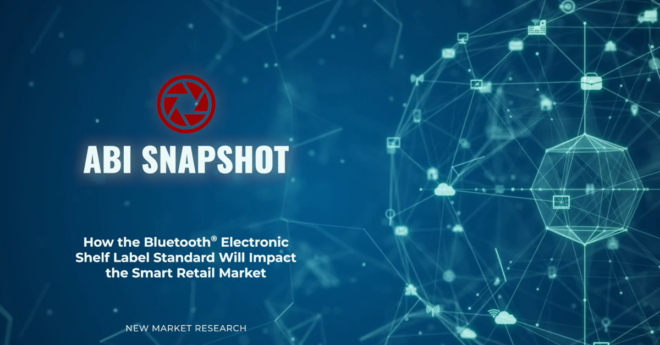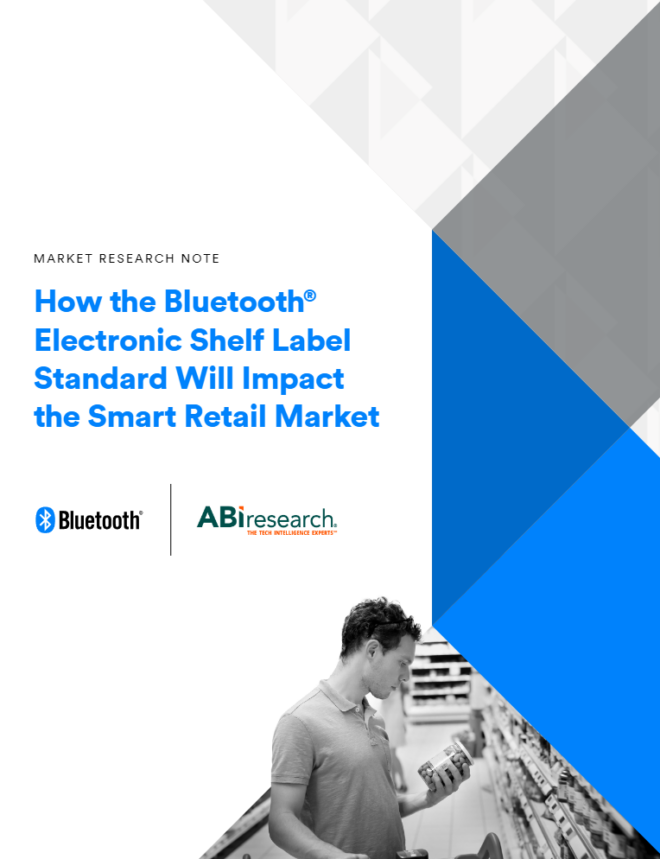Electronic shelf labels (ESL) are wireless, battery-powered e-paper displays that provide relevant information to the person reading them. This can include pricing information, product details, inventory and stock levels, offers and promotions, and other contextual information and features. ESLs can provide an enhanced customer experience while delivering greater operational efficiencies for the business.
Despite the enormous potential addressable market of tens of billions of labels across retail, warehouse, healthcare, and many other environments, ESLs have thus far been unable to reach their true market potential.
“The introduction of the Bluetooth® ESL standard will help reduce potential obstacles for retailers looking to invest in IoT technologies and accelerate adoption and innovation.”
– Andrew Zignani, ABI Research
Arguably, the biggest factor in this limited penetration has been the fragmented nature of the ESL market, which is comprised of a wide range of incompatible solutions and the lack of a unifying ESL standard. Many retailers have therefore been hesitant to adopt ESL solutions
due to resulting concerns over vendor lock-in and no multi-vendor interoperability.
Establishing a true, global ESL standard gives retailers the freedom and confidence to source ESL components from multiple vendors knowing each will work with the others.
Recently, the Bluetooth Special Interest Group (SIG) commissioned ABI Research – a global leader in analyzing, tracking, and forecasting the transformation of the smart device and IoT markets – to examine the benefits of the Bluetooth ESL standard and the impact it will have on ESL market forecasts.
![]()
FEATURED REPORT
How the Bluetooth® Electronic Shelf Label Standard Will Impact the Smart Retail Market
ABI Research explores how the recent arrival of the new Bluetooth® Electronic Shelf Label (ESL) standard will help create an interoperable ESL ecosystem that can address many of the challenges being faced by retail and other environments.
The Bluetooth Electronic Shelf Label Standard
In early 2023, the Bluetooth Special Interest Group (SIG) announced the release of the new wireless standard for the ESL market. The intention was to create a scalable, low-power, secure ESL standard that can enable the ESL market to reach its full potential. The Bluetooth® ESL standard leverages key new feature enhancements introduced in Bluetooth Core Specification Version 5.4, including Periodic Advertising with Responses (PAwR) and Encrypted Advertising Data, to deliver secure and scalable ESL deployments required by the ESL market. Most importantly, the Bluetooth SIG also released ESL Profile and Service specifications.
These were developed by the ESL Working Group, consisting of leading ESL vendors and enabling technology suppliers, and will standardize the process for message transmission between access points and ESLs. These initiatives, demanded by many retailers looking to deploy ESL technology, will enable standardized, interoperable ESL products that use Bluetooth® technology to be created, removing a fundamental obstacle to adoption which has plagued the industry to date.
Benefits of the Bluetooth ESL standard
With the introduction of a wireless standard for the ESL market, Bluetooth® technology will help unlock the next chapter for in-store digital transformation to deliver better outcomes for stores and shoppers. The arrival of the Bluetooth® ESL standard has the potential to bring a number of benefits, including:
Increased Interoperability – One of the major benefits of adopting the Bluetooth® ESL standard is that it gives retailers the flexibility and choice to buy products and solutions from one vendor knowing that they will work with those from another. This allows them to tailor the solution to their specific needs and gives them the ability to choose their preferred supplier without losing out on potential innovations from other vendors.

Flexibility and Reduced Vendor Lock-In – Retailers who adopt solutions based on the Bluetooth® ESL standard can switch to a different vendor if their current solution provider falls behind on their promises or starts to lag behind the competition, avoiding the need to commit to a single-vendor ecosystem or deploy an entirely new infrastructure.
Furthermore, as retailers increasingly deploy other smart retail technologies – including wireless sensors, lighting controls, and beacon infrastructure – this can minimize friction in enabling an interconnected smart retail ecosystem and offer greater flexibility in choosing complementary product offerings that can provide additional benefits and ROI beyond a single use case. Retailers will also have greater flexibility to choose their optimal ESL and infrastructure providers rather than being limited to vendors who are compatible with a specific proprietary solution.
Economies of Scale – Retailers can also benefit from the enormous economies of scale that Bluetooth® technology can rely on. The Bluetooth ESL standard is likely to enable a much wider number of Bluetooth chipset and ESL solution providers to address the market, while Bluetooth chipset solutions and reference designs specifically addressing the requirements of the ESL market are likely to emerge. This will enable greater product choice, increased competition, a larger supply of products and wireless chipsets, global availability, a reduced burden of entry, faster time to market, and collaboration from a wide number of players across the value chain.
Innovation and Competition – While the ESL landscape has been dominated by proprietary solutions, the availability of the Bluetooth® ESL standard will help solution providers enter the market. This democratization and increased competition within the ESL market could lead to much faster innovation via new features and product differentiation, reductions in cost via additional competition, increased awareness in the overall ESL market, and greater adoption within different regions.
FEATURED INNOVATION
Bluetooth Electronic Shelf Labels (ESL)
With the introduction of a wireless standard for the electronic shelf label (ESL) market, Bluetooth® technology is helping unlock the next chapter in in-store digital transformation to deliver better retail outcomes for both stores and shoppers.
Long-Term Product Evolution – Various industry stakeholders across the smart retail value chain will continue to work together within the Bluetooth® ESL Working Group to identify the primary requirements of the industry and help develop strong collaborative solutions. This will also lead to increased competition and will give retailers the flexibility to choose which suppliers best fit their specific requirements. Underlying standards will also help shift the focus towards value-added features rather than core functionality, spurring additional innovation, all the while guaranteeing interoperability.
Future-Proofing – For retailers, there has been some hesitation in deploying solutions due to the promise of something better in the future. By leveraging standards-based solutions, such as Bluetooth® technology, vendors have more visibility on the technology roadmap, including performance and features that can be upgraded over time as various innovators contribute to the publicly available specifications. Future-proof standards-based infrastructures will lay the foundation for additional retail problems to be solved and for new services to be created over time, unlocking further value and ROI.

High Scalability – Though the current ESL market is dominated by proprietary technologies, the market is seeing strong growth and existing solution providers offer very compelling ESL product portfolios. However, serving the addressable market of tens of billions of shelf labels globally is unlikely to be achieved if retailer choices are tied to the product portfolios of a few proprietary vendors. Retailers across the globe could be at the mercy of a single supplier’s proprietary technology and the fortunes of a single company. Any disruptions faced in their supply chain could negatively impact planned rollouts. In contrast, by standardizing ESLs using Bluetooth® technology, retailers can benefit from the huge number of Bluetooth vendors, chipset suppliers, software developers, system integrators, and other industry players that continue to grow and evolve.
Streamlined Deployment – Most enterprise Wi-Fi access points already include embedded standards-based IoT technologies, such as Bluetooth® technology. Therefore, deploying ESLs with Bluetooth technology as the wireless networking technology will require minimal additional investment into dedicated ESL infrastructure, reducing the cost and complexity of deployment. This contrasts with proprietary technologies, which have traditionally required a discrete network of transceivers in addition to the wireless AP to deploy the ESL network (though some have partnered directly with AP vendors).
Multi-Use Infrastructure – By leveraging Bluetooth® technology, not only can the infrastructure be used to enable ESLs, but the same infrastructure can accommodate multiple additional Bluetooth® use cases, including wireless sensor networks, beacons and proximity services, asset and personnel tracking, POS connectivity, and lighting and building controls, among many others. This can drastically increase the value of a smart retail deployment’s ROI while minimizing the cost and complexity of managing multiple use cases.
To learn more, read the full report: How the Bluetooth® Electronic Shelf Label Standard Will Impact the Smart Retail Market. This report explores how the recent arrival of the new Bluetooth ESL standard will help create an interoperable ESL ecosystem.
![]()
FEATURED REPORT
How the Bluetooth® Electronic Shelf Label Standard Will Impact the Smart Retail Market
ABI Research explores how the recent arrival of the new Bluetooth® Electronic Shelf Label (ESL) standard will help create an interoperable ESL ecosystem that can address many of the challenges being faced by retail and other environments.
電子棚札(ESL)はバッテリーで動くワイヤレスの電子ペーパーディスプレイで、利用者に対し商品に関する情報を表示して提供します。この情報には、価格、商品の詳細、在庫表や在庫数、キャンペーンやセール、その他の関連情報や特徴などが含まれます。ESLは、業務効率の向上を実現するとともに、より良い顧客体験の提供を可能にします。
ESLの潜在市場(Potential Addressable Market、PAM)は小売や倉庫、ヘルスケアをはじめ多くの分野にまたがり、ラベル数百億枚にも相当する膨大な規模と考えられていますが、現状ではその真の市場可能性の実現には遠く及びません。
普及が進まない最大の要因は、おそらくESL市場の細分化にあります。すなわち、互換性のないさまざまなソリューションの乱立と、統一的なESL規格の欠如です。多くの小売業者が、市場の細分化に伴うベンダーロックインや、複数のベンダー間の相互運用性の欠如を懸念し、ESLソリューションの採用をためらっています。
真のグローバル規格の確立により、小売業者は、相互運用性があるという安心感のもと、複数のベンダーからESLシステムの構成品を調達する自由と自信を得られます。
先日Bluetooth SIG(Special Interest Group)は、Bluetooth®︎ ESL規格のメリットと規格がESL市場予測に与える影響について、スマートデバイスおよびIoT市場の変革に関する分析・追跡・予測分野における世界的なトップ企業であるABI Researchに調査を依頼しました。
Bluetooth ESL規格とは
2023年初頭、Bluetooth SIG(Special Interest Group)はESL市場に向けて新たな無線規格の公開を発表しました。その目的は、スケーラブルで低消費電力、セキュアなESL規格を策定し、ESL市場が持つ潜在的な可能性を最大限に引き出すことにあります。Bluetooth®︎ ESL規格はBluetoothコア仕様5.4で導入された主要な新機能拡張であるPAwR(レスポンス付き定期アドバタイズ)やアドバタイズデータ暗号化などの機能を活用し、ESL市場で求められる安全かつスケーラブルなESLの展開を実現します。最も重要な点は、Bluetooth SIGがESLプロファイルとサービス仕様についても公開したことです。
このプロファイルとサービス仕様は、主要なESLベンダーとイネーブリング技術サプライヤーで構成されるESLワーキンググループによって開発され、アクセスポイントと各ESL間のメッセージ送受信プロセスを規格化します。この取り組みは、これまでESL技術の導入を検討する多くの小売企業が求めてきたものでした。これにより、Bluetooth®技術を使用し、標準化され相互運用可能なESL製品を製造できるようになり、業界を悩ませてきたESL導入への根本的な障害が取り除かれます。
Bluetooth ESL規格がもたらすメリット
ESL市場に向けた無線通信規格の策定により、Bluetooth®︎技術は店舗のデジタルトランスフォーメーションに新たな段階に向けた可能性を解き放ち、店舗と買い物客の両方により良い結果をもたらします。Bluetooth®︎ ESL規格の登場により、以下のようなさまざまなメリットが想定されます。
相互運用性の向上:Bluetooth®︎ ESL規格を採用する大きなメリットの一つは、小売企業が商品やソリューションをあるベンダーから購入する際に、他のベンダーの商品との互換性を確認した上で購入できるという柔軟性と選択の余地をもたらすことにあります。これにより、ニーズに合わせたソリューションのカスタマイズが可能になり、他のベンダーによるイノベーションを享受する可能性を捨てることなく、好みのサプライヤーを選択できます。

柔軟性を高め、ベンダーロックインを削減:Bluetooth®︎ ESL規格に準拠したソリューションの採用により、小売企業は、プロバイダーが契約の適切な履行を怠り、また競合他社に遅れを取るなどの場合に、単一のベンダーに縛られることやインフラの全体的な入れ替えを余儀なくされることなく、 別のベンダーに切り替えられます。
また、より多くの小売企業がワイヤレスセンサー、照明制御、ビーコンインフラなど他のスマートリテール技術を導入するなか、相互接続されたスマートリテールのエコシステムを実現する際の摩擦を最小限に抑え、単一のユースケースにとどまらない付加的メリットとROIを実現する、補完的な製品をより柔軟に選択できるようになります。また、小売企業は、独自ソリューションを展開するベンダーに限らず、最適なESLプロバイダーやインフラプロバイダーからより柔軟に選択できるようになります。
さまざまな市場やカテゴリーで採用:また小売企業は、Bluetooth®技術を採用するさまざまな市場・カテゴリーから莫大な規模の経済的メリットを得られます。Bluetooth ESL規格を通じて、より多くのBluetoothチップセットプロバイダーやESLソリューションプロバイダーが市場に対応できるようになる一方で、ESL市場の要件に特化したBluetoothチップセットソリューションやリファレンスデザインが登場する可能性があります。これにより、商品選択肢の増加、競争促進、商品やワイヤレスチップセットの供給拡大、グローバルな供給に加え、市場参入の負担低減、市場投入までの時間短縮、バリューチェーン全体にわたる多くのプレーヤーによるコラボレーションが可能となります。
イノベーションと競争:これまでのESL市場の主流は、 専有技術によるソリューションでした。しかしBluetooth® ESL規格が利用可能になることにより、ソリューションプロバイダーの市場参入が容易になります。こうしたESL市場の民主化と競争の促進により、新機能や商品の差別化による技術革新が加速し、新たな競争によるコスト削減と、市場全体での認知度向上がもたらされ、さまざまな地域で導入が拡大する可能性があります。
商品の長期的な進化:スマートリテールのバリューチェーン全体におけるさまざまな業界関係者が、Bluetooth® ESLワーキンググループ内で引き続き協力し、業界の主要な要件の特定と、コラボレーションのための強力なソリューションの開発を支援します。これにより競争が促進され、小売企業は自社の特定の要件に最適なサプライヤーを柔軟に選択できるようになります。また、基盤となる規格があることにより、開発における注力対象として中核的な機能から付加価値となる機能への移行が促され、相互運用性を担保しながらさらなる技術革新を後押しします。
確かな将来性:より優れた技術の出現に対する将来的な期待から、 ソリューションの導入をためらう小売企業も存在します。Bluetooth®技術のような規格ベースのソリューションを活用することにより、ベンダーはより明確に技術ロードマップを把握できるようになります。このロードマップには、さまざまなイノベーターが公開された仕様への貢献を続けるなかで、時間とともにアップグレード可能となる性能や機能などが含まれます。規格に基づき確かな将来性を持つインフラが、小売業界における新たな課題を解決し、時間の経過とともに新たなサービスを生み出すための基盤をもたらし、さらなる価値とROIを創出します。

優れた拡張性:現在のESL市場は、専有技術が主流となっています。それにもかかわらず市場は力強い成長を遂げており、既存のソリューションプロバイダーは非常に魅力的なESLの商品ポートフォリオを展開しています。しかし、小売企業の選択肢が、少数の専有ベンダーの商品ポートフォリオに縛られるようでは、世界全体で数百億枚ともされるESLの潜在市場にサービスを提供することは不可能でしょう。また、世界中の小売企業が、たった一社のサプライヤーの専有技術や経営状況に翻弄されるおそれがあります。サプライチェーンの混乱は、計画済みの新規展開に悪影響を及ぼしかねません。それとは対照的に、Bluetooth®技術を活用したESL規格の策定により、小売企業は継続的な成長と発展を続ける膨大な数のBluetoothベンダー、チップセットサプライヤー、ソフトウェア開発業者、システムインテグレーターなどの業界のプレーヤーからの恩恵が得られるようになります。
導入の合理化:大半の企業向けWi-Fiアクセスポイントには、Bluetooth®技術などの規格をベースとしたIoTテクノロジーが既に組み込まれています。そのため、ワイヤレスネットワーキング技術としてBluetooth技術を用いたESLを導入する場合、ESL専用インフラへの追加投資を最小限に抑え、導入に伴うコストと複雑性を軽減できます。従来の専有技術ではこれと対照的に、ESLネットワークを展開するためにはワイヤレスアクセスポイントに加え、 トランシーバーの個別ネットワークを必要としていました(アクセスポイントのベンダーと直接提携している場合もあります)。
インフラを複数のユースケースで活用:Bluetooth®技術を活用することにより、ESLに用いるインフラを、ワイヤレスセンサーネットワークや、ビーコンおよび近接サービス、資産や従業員の追跡、POS接続、照明やビル制御など、 さまざまなBluetooth®ユースケースに追加的に活用できます。これにより、複数のユースケース管理のためのコストと労力を最小限に抑えながら、スマートリテール導入のためのROIの価値を飛躍的に高めることができます。
詳しくは、「Bluetooth®︎電子棚札(ESL)規格がスマートリテール市場に与える影響」をご覧ください。このレポートでは、新しく公開されたBluetooth ESL規格によって、相互運用性のあるESLエコシステムをどのように構築できるかを考察しています。




![Periodic Advertising with Responses[1]](https://www.bluetooth.com/wp-content/uploads/2024/02/Periodic-Advertising-with-Responses1-660x345.png)



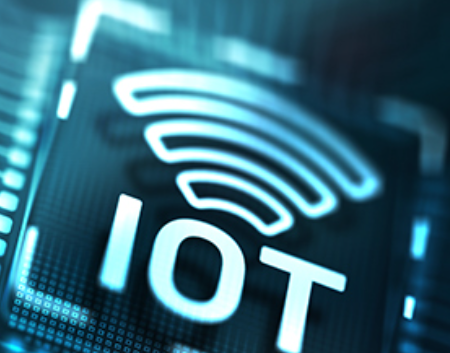
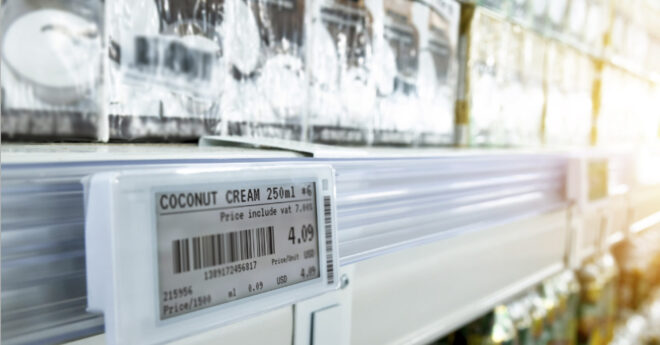
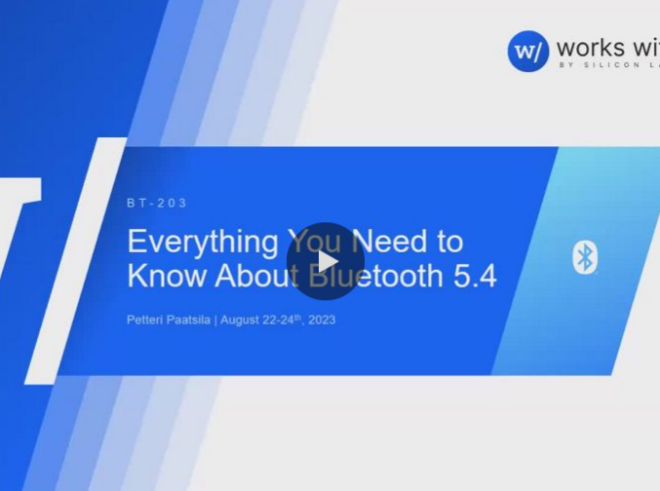
![hqdefault[1]](https://www.bluetooth.com/wp-content/uploads/2023/08/hqdefault1.jpg)
